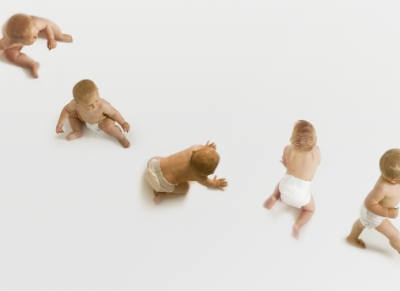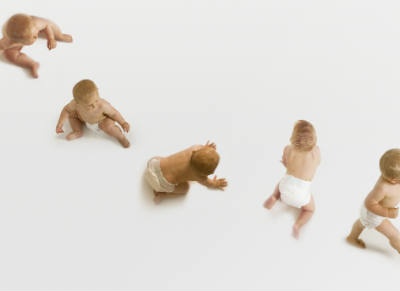“Gross motor skills are the abilities required in order to control the large muscles of the body for walking, running, sitting, crawling and other activities.” (HealthOfChildren.com)
Motor skills, overall, are physical activities that involve muscle movement. There are two types: gross motor skills, which use arms and/or legs, or the whole body, such as when you run, jump or crawl. Fine motor skills involve smaller actions, such as holding a crayon with a thumb and finger. This post looks at the first type only.
An article in Scholastic.com shares what to expect as your child grows, along with how to encourage age-appropriate development. They label the years from birth to two as “I Reach It!” because your child learns how to move independently during this time by crawling, sitting upright, reaching for objects, standing, walking, running and so forth. Parents should create a safe and supportive physical environment, including open spaces where children can learn to move around without bumping into objects. You can also help, as just one example, by creating “toddler obstacle courses with pillows or baskets, which the child has to walk around.”
Ages three to four is the “Watch Me! “stage. Your child will likely mimic others, appreciating physical activities that allow him or her to practice “fancy footwork” and otherwise use “quick gross motor reactions.” When your children reach this age, create opportunities for movement throughout the day, allowing them to pump their legs as they swing, and give them bean bags to toss. They can scrub the table after snack time, sing songs with fun motions and more. Ages five to six is the “I Can Kick It Far!’ stage, where your children will demonstrate more complex gross motor skills. They will be more independent in getting themselves ready for the day and will be more advanced in their coordination when performing physical activities such as climbing stairs.
More About Gross Motor Development
YourTherapySource.com shares ten different gross motor activities that will help your child develop the crucial ability to play. Musical play is magical play, as music can even encourage babies to move, including those who are still infants. The most effective form of music? Your own singing voice! And, even infants prefer certain toys over others. When babies are around toys they prefer, they show more playful engagement. So, consider changing the selection of available toys to encourage play-related movements.
Be careful not to offer your child play equipment that is too challenging for him or her. When that happens, he or she will not develop a “sense of mastery” in motor play, which is counterproductive. Motor development delays can also happen when toys aren’t challenging enough – or just plain aren’t interesting to your child. As your child gains skill, consider playing a game in the dark, perhaps one played beneath a blanket. This helps your child to advance in body awareness.
Be sure to provide your child with unstructured play time, too, allowing him or her to come up with ideas for games, choosing toys and the like. It’s recommended that children get at least 60 minutes per day of active, unstructured playtime.
Finally, here are specific gross motor activities you can encourage: hopscotch, jumping rope, kicking or throwing a ball, and walking on a narrow curb while holding a bulky object in one hand, and then in the other hand. The article at HealthOfChildren.com offers more detailed development benchmarks, along with guidance about what to do if you have concerns about your own child’s gross motor development.




